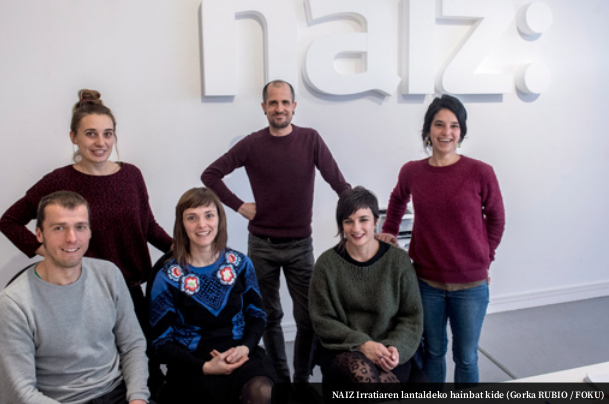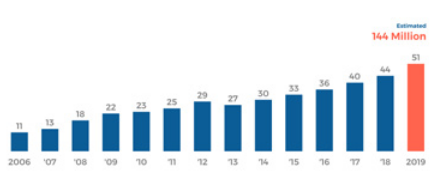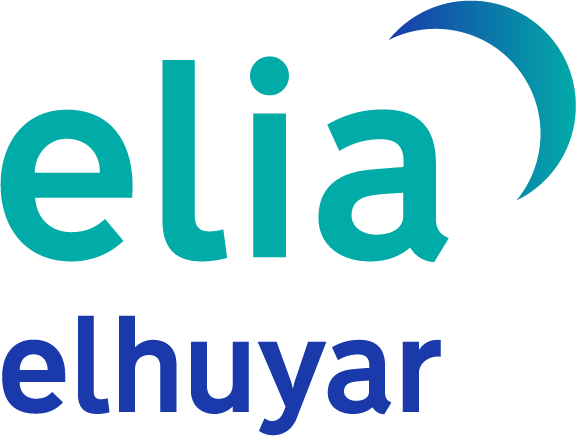RADIO
The radio has reached the top of Instagram and clickam. It is an unbeatable means for the Basque people and is creating very ambitious tools to adapt to the digital age. In this environment the new national radio in Basque in 2020, NAIZ Irratia, will be framed.
Two radio images
1: one of those radio shows that speaks to your ear on the transistor, when the warm of the house has blurred the glass.
2: a young man leaves the subway in New York, with the last smartphone with no FM receiver in his hand, listening to the podcast he likes.
Radio, or hearing, if you like, has been able to adapt well to the time. To talk about the “crisis” of radio we should go to the birth of television, rather than to the digital age. And that is that, in the midst of the paper crisis, when the Internet has embarked on the path of leaving traditional television behind, radio continues to make its own way tirriki. Despite being hit hard by the loss of advertising, it has not suffered a significant decrease in the number of listeners and has been able to create an audio offer adapted to the new consumption habits.

Two examples associated with the starting figures
First: If we look at the Spanish state data published by the EGM, about 40% of the population read newspapers on paper a decade ago, about 23%, were less than 17 points. Conversely, in the case of radio, access was around 55% in 2009, 57.5% today, two and a half points. Over the same period television has declined by four points (from 89% to 85%) and Internet access has doubled (from 34% to 78%).

Second: One in two Americans over 12 has heard of podcasts in 2019.
Source: Edison Research Podcast Consumer 2019.

In our case, another significant data. Basques mainly view or read television and the press, both on paper and on the Internet, in Spanish or French. Conversely, according to data published in the Basque Media Yearbook, 1 Basque speakers prefer Basque radio stations.
Continuous wager with the radio
As Egin did before, the project launched with the Gara newspaper and the subsequent NAIZ have always focused on the need to somehow promote radio within its communication offering. Since its creation, radio has been a fundamental pillar in the Basque communication field.
The Egin radio left a sweet taste in the generations of the time. They closed it hard, causing for many a clear vacuum in the waves. Coinciding with the implementation of the GARA project, some of the participants had from the beginning the need for a radio project due to the lack of diversity in the radio dial, most of the spectrum is occupied by Spanish and French broadcasters, the Basque – beyond the public entity – has hardly a presence, although the work of local broadcasters and free radios was terrible, the need for a national radio was evident.
In this environment the Aztibegia association emerged, with the reference of Agosti Xaho, with the objective of promoting a radio project based on citizens. Its objective was for the national radio, with progressive values, to act in the three great languages of the Basque Country. In 2006, the Info7 broadcast was created.
In its thirteen years, the work team acquired the technological knowledge necessary for the creation of a national broadcaster, has been an essential tool to maintain the radio wager and has built an ideal site to make the current leap.

Cracks at closure
The aim of radio was to be able to broadcast normally throughout the Basque Country, it did not succeed. The current situation of the dial in the Basque Country is a result of specific public policies, or lack thereof, in which French and Spanish channels predominate, the legal barriers to the development of popular initiative radio stations, the marginalization of the Basque country…
Starting in 2012, new licensing options were created throughout the Basque Country. Within the analogue shutdown that Paris is promoting in the Northern Basque Country and in the Southern Basque Country, they were called by the governments of Pamplona and Vitoria through competitions for FM.
The Aztibegia association, the promoter of Info7, is taking advantage of all these opportunities through different proposals for collaboration. In this sense, the public call, presided over by Patxi López, created an unprecedented opportunity. Aztibegia eta beste batzuk osatu ziren EIZ (Euskal Irrati Zerbitzuak) won eight licenses in the competition to promote a new radio project in Basque.
This achievement opened a crack in the spectral radio that, driven by popular initiative, allowed the creation of a station that is normally heard in practically all of Araba, Bizkaia and Gipuzkoa. In order for this opportunity to materialize, however, a long judicial struggle has been necessary to, from the opportunity licenses that were created last year, begin a new national radio in Basque.
New Transmedia and NAIZ
Over time, and optionally, there has been a merger between the new radio project and the development of NAIZ. In 2012, the GARA project launched this new digital medium, that of the Internet, with the aim of maintaining the new habits that are developing in the field of communication. The challenge of finding a new solution to the paper business model in depletion is developing, driving the digital transition of the GARA reference project.
GARA and NAIZ have been direct promoters or collaborators of several projects working in Basque. kazeta-eus in the Northern Basque Country, such as the supplements Gaur8 and 7 haizetara and Hamaika TB. The creation of NAIZ Irratia has meant a new joint working space between these projects and two direct conclusions: the creation of a new media in Basque and the increased importance of Basque in GARA and NAIZ.
Some will call it ‘crisis’, others ‘adaptations’, but it is clear that the format of formats is lagging behind (having a newspaper, having a radio, having a website…) and that the fund takes on more prominence than ever in the 21st century. the end of the second decade of the twentieth century. Today the pulse can succeed without the need for a means of communication (for example, because it spreads a lot in a social network). When we talk about transmedia inside NAIZ and GARA, we mean putting the essence in the center. Organise the drafting according to the substance and not the format.
This meeting point of the works implies, therefore, the construction of a work scheme that is able to obtain different results from the single wording.
The ghost of spolio
With the creation of the radio GARA has come a new ghost that aims not to hinder the time, technology, legislation and future since the past. Although the closure of Egin was considered unfair by the Spanish courts themselves, the invention of Judge Baltasar Garzón’s ‘ideological inheritance between companies’ has placed a burden on GARA of around EUR 3 million.
There are therefore two very difficult elements to marry: An economic threat that can wipe out GARA and NAIZ, and the need to look to the future with ambition. Spolio on the one hand, development of NAIZ and creation of NAIZ Irratia on the other.
Many of the means to be put at the forefront in the creation of radio have had to be used to combat spolio during all these months. The ‘Subscribe to the Future’ campaign has been very successful luckily and although the wound is open, the qualitative leap of NAIZ Irratia comes when you are seeing the light at the end of the tunnel.
2020 New programming
NAIZ Irratia started its emissions in the spring of 2019 and on 7 January has launched a comprehensive programming. He structured his grid structured around two fundamental axes: actuality, on the one hand, music, on the other.
Thread of Information
Regarding the first, there is a close relationship between the Internet and radio. We can imagine how the timeline of Twitter is the axis that leads by name NAIZ Radio Information Line. Continuous flow of information from 7:00 to 21:00 hours. The Informative Thread has been organized in three major editions, the first from 07:00 to 10:00, the second from 12:00 to 14:00 and the third from 18:00 to 21:00. The bulletins make up the space between editions.
The work axis that best reflects the idea of the single wording mentioned above is today. A format would lead to a tripled drafting of the current GARA and NAIZ project: radio, digital edition and paper. The basic scheme, on the other hand, leads us to produce three results of a single wording, with its shortcomings and virtues. In the former, the workload; in the options, deep knowledge of the subject and the way to reach the listener with added value, in the case of radio.
The three editions of the Thread of Information feed, therefore, the human capitals of GARA and NAIZ, which have been structured as tools for listening to the voices of the main actors, activists, protagonists and actors of the Basque Country, offering the listener an integral and uninterrupted offer of today.
Music
Radio needs music and music needs radio in NAIZ Irratia. Many people talk about the lack of circuits, the lack of references, the need for a proper "market" ... and the new broadcaster talks about its humble contribution, but intends to do so with ambition in this field.
Three starting points: Music Pills, Other and specialized programs.
NAIZ Irratia Musika Pilula has just started the podcast. They are pieces of about ten minutes that allow the dissemination of the latest works by the Basque composers. He takes a brief interview with the musician and a couple of samples of his latest work.
Another is the pills where the references of Basque musicians are collected. This format is part of your beloved phonoteca. Andoni Tolosa, Eneritz Furyak, Zazkel, Montauk, Birkit, Eraul, Amorante, Ibil Bedi, Ane Garcia, Ibon RG, Dupla, Petti, Mikel Markez, Olatz Salvador, Nizuri Tazuneri, Miren Narbaiza
In the case of specialised sessions, three sessions are already underway: Revolutionary Grooves (electronic and black music), Reggae Fever (reggae music) and Satellites (electronic music).
Concerning immediate assistance, first Emen Gonak: Directed by the soloist Birkit Alonso, it will make its own space to the female scene. On the other hand, the monographic program “The Domestic Harvest”, which will analyze the influence of cultural movements or musical fashions in our people and in our creation.
The musical offer of NAIZ Irratia aims to have a friendly radio, which gathers all kinds of music and brings a new speaker to the creation existing in Euskal Herria and especially in Euskera.
Cooperation
If the editorial and the transmedia model are the basis of information, musical cooperation and other types of programs is the model that seeks radio.
First of all, there is the pink radio network, as this network of radio stations from the popular initiative remains a clear example of synergy.
Furthermore, NAIZ Irratia is promoting collaboration with agents, institutions and initiatives of the Basque Country to have top-level content in its programming. The programs of bertsolarism, health, literature, travel, film and series… that emerged as a result of this collaboration model are about to begin with the opening of an offer that may be pending throughout 2020.
Podcasts, habit and format
Podcast contains at least two expressions that can be drawn according to the age of the listener partially. It can indicate another way to listen to the radio, a piece of audio that everyone listens when they want, and also a way to do the radio, which requires a work that moves away from the direct… and which can have both.
In the case of NAIZ Irratia has both. Most of the contents of NAIZ Irratia can be heard via Apple, Google, Ivoox and Spotify platforms subscribing to the fluidity of each program. Current interviews are focused on the Haria podcast and each program has its own podcast. There are, therefore, those created as podcasts, such as the Music Pills, and those that, although created live, propagate as podcasts adapting to new ways of listening to radio.
The issue of podcasts is not new, nor in ours. In 2006, Info7 irratia also had podcasts, for example. Now it seems that they can have a new level of penetration, taking into account the American data we refer to in the introduction. The podcast can be an opportunity to listen to the radio that is always about to arrive, or a renewed technology that is already dominating our mobiles in a smooth way.
FM
In any case, podcasts at the moment will not replace the level of FM penetration, but will replace it.
It"s not a convenient place for popular radio spectrum initiative. The work of local, associative and free broadcasters has been, over all these years, to remove the txapela. But the shock is terrible, there is nothing more to do with the wager that has been made since the popular initiative and the one that has been driven by the institutions. Radio in Basque is the main offering that offers diversity to the dial. On the contrary, the Spanish or French radio is the one that has spread as a chipirón ink in the spectrum regulated by the Basque institutions.
FM antennas and NAIZ radio range.

NAIZ Irratia has a national vocation and vision. As far as FM emissions are concerned, all legal possibilities are being taken advantage of so that it can be heard normally throughout the Basque Country. It hopes to take further steps in this direction in the coming months. In Navarre, for example, DTT will soon sound and the FM is taking action to listen.
The competition that was opened for the CAPV encouraged the creation of this new radio that already reaches the area where 90% of the population lives in this space.
The sphere of radio has not been constructed from a democratic point of view, as in other areas, it has been characterized by a predominance of clientelism and partisan in the regulation of space, the lack of popular vision, the non-importance that should be given to diversity and, beyond the exception of the public body, the Basque language has been excluded. NAIZ Irratia has opened a crack, the audience that is large or small will decide.
1.- Amézaga, Josu (2019): “Media audiences in Basque: historical view”, Basque Media Yearbook 2018.


